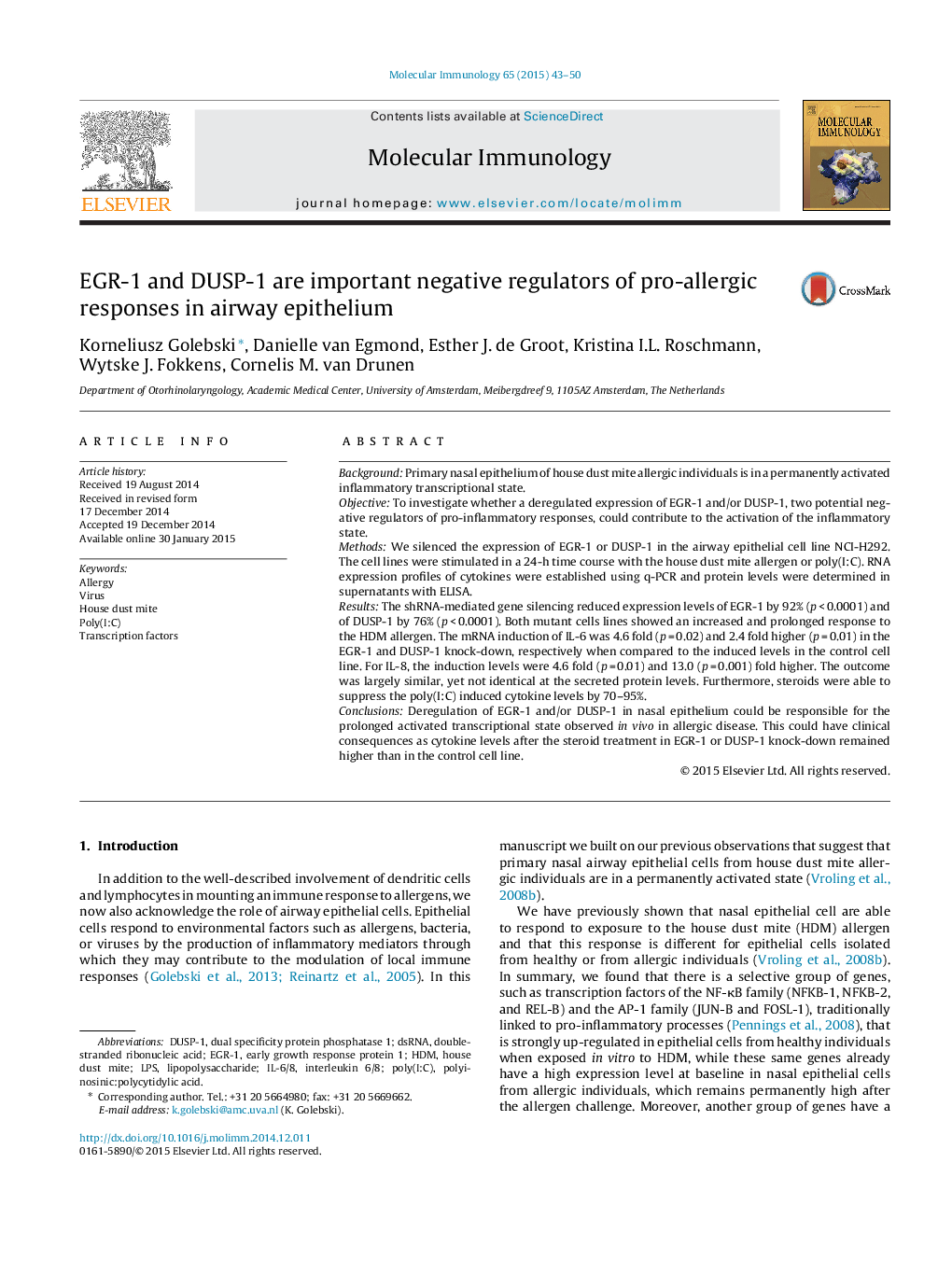| کد مقاله | کد نشریه | سال انتشار | مقاله انگلیسی | نسخه تمام متن |
|---|---|---|---|---|
| 2830626 | 1163747 | 2015 | 8 صفحه PDF | دانلود رایگان |

• House dust mite extract induces pro-inflammatory responses in human airway epithelium.
• EGR-1 and DUSP-1 fail to up-regulate upon HDM stimulation in allergic epithelium.
• Forced down-regulation of EGR-1 or DUSP-1 enhances pro-inflammatory responses to HDM and poly(I:C) in healthy epithelium.
• EGR-1 or DUSP-1 knock-down reduces the effectiveness of steroid treatment in airway epithelium.
BackgroundPrimary nasal epithelium of house dust mite allergic individuals is in a permanently activated inflammatory transcriptional state.ObjectiveTo investigate whether a deregulated expression of EGR-1 and/or DUSP-1, two potential negative regulators of pro-inflammatory responses, could contribute to the activation of the inflammatory state.MethodsWe silenced the expression of EGR-1 or DUSP-1 in the airway epithelial cell line NCI-H292. The cell lines were stimulated in a 24-h time course with the house dust mite allergen or poly(I:C). RNA expression profiles of cytokines were established using q-PCR and protein levels were determined in supernatants with ELISA.ResultsThe shRNA-mediated gene silencing reduced expression levels of EGR-1 by 92% (p < 0.0001) and of DUSP-1 by 76% (p < 0.0001). Both mutant cells lines showed an increased and prolonged response to the HDM allergen. The mRNA induction of IL-6 was 4.6 fold (p = 0.02) and 2.4 fold higher (p = 0.01) in the EGR-1 and DUSP-1 knock-down, respectively when compared to the induced levels in the control cell line. For IL-8, the induction levels were 4.6 fold (p = 0.01) and 13.0 (p = 0.001) fold higher. The outcome was largely similar, yet not identical at the secreted protein levels. Furthermore, steroids were able to suppress the poly(I:C) induced cytokine levels by 70–95%.ConclusionsDeregulation of EGR-1 and/or DUSP-1 in nasal epithelium could be responsible for the prolonged activated transcriptional state observed in vivo in allergic disease. This could have clinical consequences as cytokine levels after the steroid treatment in EGR-1 or DUSP-1 knock-down remained higher than in the control cell line.
Journal: Molecular Immunology - Volume 65, Issue 1, May 2015, Pages 43–50